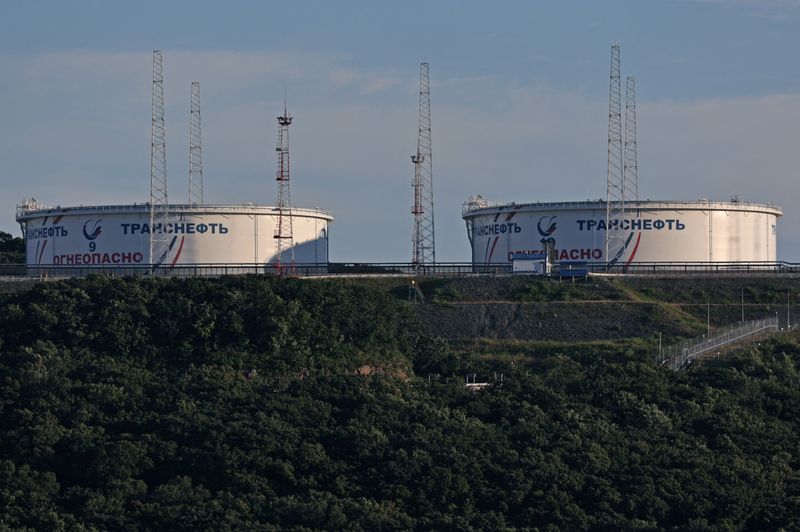
By Erwin Seba
HOUSTON (Reuters) -Oil futures fell about 1.5% on Friday, finishing the week lower on declining Chinese demand and hopes of a Gaza ceasefire agreement that could ease Middle East tensions and accompanying supply concerns.
Brent crude settled down $1.24, or 1.5%, at $81.13 a barrel. West Texas Intermediate crude ended $1.12, or 1.4%, lower at $77.16 a barrel.
For the week, Brent was trading down more than 1% while WTI fell beyond 3%.
“Yesterday’s better-than-expected U.S. GDP growth figures initially supported the crude market,” said George Khoury, global head of education and research at CFI. “However, these gains were overshadowed by concerns about declining Chinese oil demand.”
Data released last week showing that China’s total fuel oil imports dropped 11% in the first half of 2024 have raised concern about the wider demand outlook in China.
“The Chinese demand situation is going down the tubes here and crude oil prices are going down with it,” said Bob Yawger, director of energy futures at Mizuho in New York.
China’s economy is threatening to enter a deflationary cycle, where prices will fall because of falling demand, Yawger said.
“And that is about the worst possible scenario for a country that is the largest importer of crude oil on the planet,” he said.
Meanwhile, demand from the world’s top oil consumer was also expected to ease as U.S. refiners are preparing to cut back production as the end of the summer driving season in early September nears.
The nation’s second largest refiner, Valero Energy (NYSE:VLO), said on Thursday its 14 refineries would run at 92% of combined capacity in the third quarter. Valero’s refineries ran at 94% in the second quarter.
In the Middle East, hopes of a ceasefire in Gaza have been gaining momentum.

A ceasefire has been the subject of negotiations for months, but U.S. officials believe the parties are closer than ever to an agreement for a six-week ceasefire in exchange for the release by Hamas of female, sick, elderly and wounded hostages.
Baker Hughes’ count of U.S. oil drilling rigs, an early indicator of future output, increased by five to 482 this week and by three in July, raising the number of rigs for the first month since March.
This post is originally published on INVESTING.


